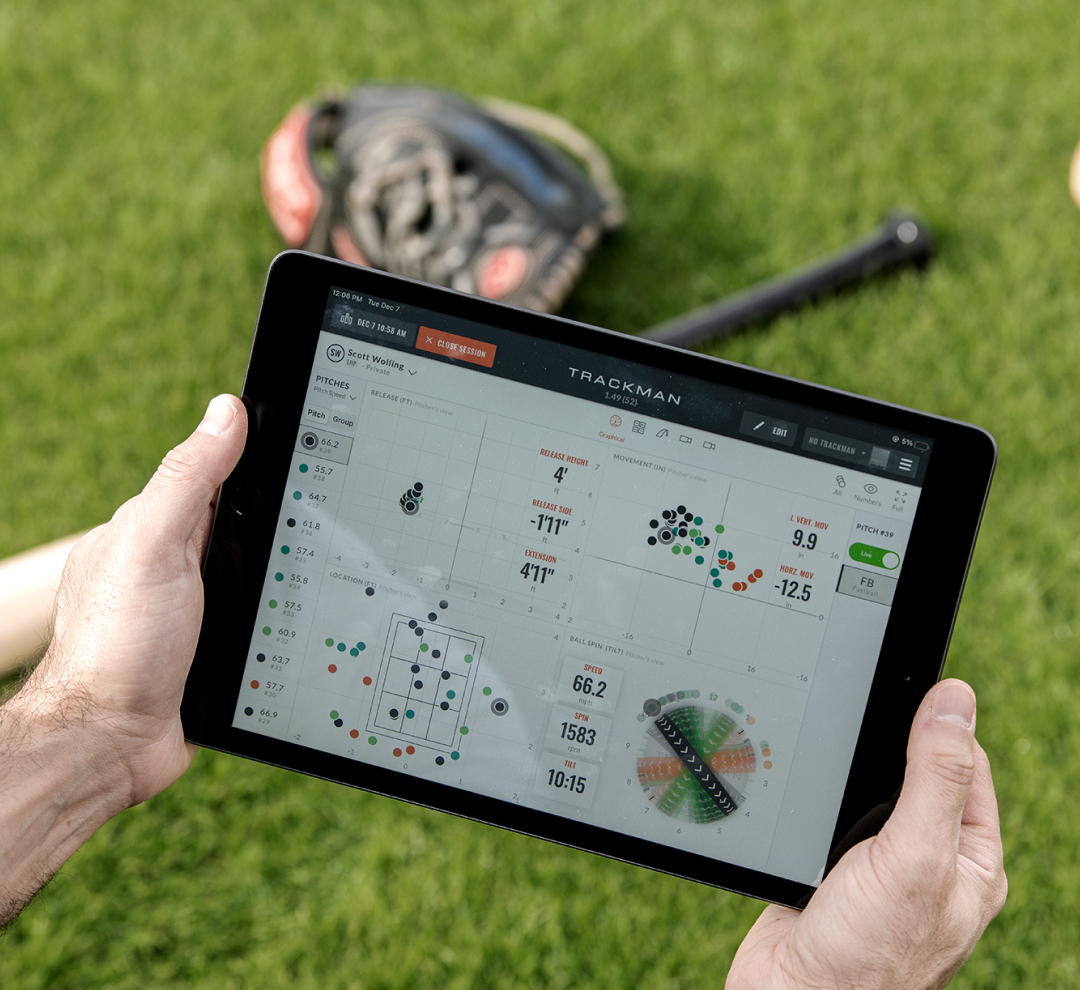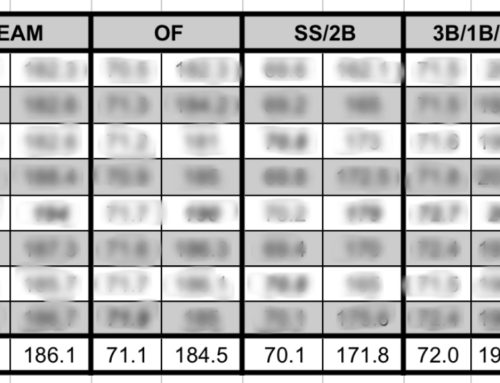Importance of Understanding Your Numbers
Modern baseball is defined by numbers, metrics, and stats. Whether you’re a major league pitcher, or a youth baseball player you are constantly being measured and compared against your peers. You could argue that numbers also defined prior generations but the heavy reliance on these statistics wasn’t nearly as important as it is in today’s modern game.
Today’s pitchers are not just defined by what their ERA is but they are measured and compared to their colleagues on things like spin rate, velocity, ball movement profiles and much more. In the past, these metrics were only available to MLB players because the technology used to measure these metrics were largely unaffordable to the average consumer. Now technologies like Rapsodo and Trackman are available at somewhat affordable prices to player development facilities, giving players access to MLB quality metrics that are being used to develop and build the next generation of pitcher.
FAST was an early adopter of Rapsodo. 5 years ago, we saw the value of this technology in developing our athletes for next level competition, giving them the greatest insight into their development offered anywhere in Colorado. Before there were certifications and courses designed to teach these metrics, our staff was diving deep into learning how these readings could benefit our athletes. We became as proficient as any MLB organization in looking into these numbers, deciphering their meanings and being able to communicate the information to our athletes in a language they would understand. Fast forward to 2021 and our facility decided to upgrade to the next level of pitch tracking technology by investing in Trackman. Trackman offers an unparalleled look into pitch metrics at a more accurate and advanced level. Where Rapsodo uses optical based tracking technology, Trackman uses radar based tracking technology to give more accurate readings.
With this new technology FAST instructors have not skipped a beat when it comes to deciphering and disseminating this information to our athletes. There are many facilities in town that have similar technologies (though we are the only privately held Trackman), many of these facilities have the technology just to say they have it, they don’t actually know how to use it to the benefit of the athlete. This is where FAST sets itself apart from our competitors. Our deep understanding of the technology and ability to communicate that information with our athletes in an easy to understand format makes FAST the premier destination for athletes who truly want to know more about themselves and their abilities.
Why is this information important to the High School athlete, the College athlete or even the parent of one of these players? That’s a great question that I hope to explain.

Assessment
Before we ever get started manipulating, fixing or improving pitch quality, we need to get a baseline of information about who you are and where you currently stand. A 20-25 pitch bullpen can give us great insight into what your stuff is doing and where we can start our process. What kind of fastball do you throw? High spin? Low spin? Do you cut it? Does it rise? Does it sink? These questions are often unanswered before we start but after our initial assessment we can clearly define what it is. How do you use your fastball? Throw it high in the zone? Low in the zone? Ahead in the count? Behind in the count? These types of questions can be answered with an initial assessment. These questions can also be asked of your other offerings like curveballs, sliders, change ups and spit fingers. By the end of the assessment you will have a complete picture and understanding of your repertoire and how it currently plays.
Additionally, FAST looks at your mechanics and will help define the low hanging fruit that may be causing issues with your pitches, command or overall performance. Using high speed video and our extensive understanding of body movements, we can identify areas in your mechanics that can be improved which can lead to improved pitch performance.

Explaining It All
It’s one thing to have information, it’s another to actually know what it all means and how it applies to you. FAST instructors sit down with each athlete after our assessment to lay out all the information and help you understand it in terms that make sense to you.
We start with mechanics and identify areas that we feel could be leading to a loss of velocity, a source of arm issues or lack of command. By looking at slo motion video, scrubbing through mechanics, frame by frame, you will have a vast understanding of what is happening as you deliver the baseball. Our staff will be able to point out and explain issues like what a “soft front knee” is or a “late arm” and how those types of mechanics flaws can lead to issues previously mentioned.
Trackman information can be daunting but the staff at FAST can break it down in fundamental terms that make it easy to digest and understand. We look at each pitch individually and make recommendations based on current performance that can help improve these pitches through break or command.
For example, your fastball may spin at 2200 rpm, have 12 inches of vertical lift and 3 inches of horizontal run while spinning on a 12:30 axis at 80mph. On the surface these numbers don’t mean much to the average athlete. To the trained eye of a FAST instructor, we will likely tell you that we think your fastball has some cut to it which is why you do not create much vertical lift but have above average spin rate for your velocity. If this is not a desired trait of your arsenal, we would recommend trying to back spin the baseball more efficiently to create more vertical lift. We do this through cuing the athlete in the bullpen in various ways that would help them understand staying behind the ball and use high speed video to support our instruction. Additionally there may be some drills that the athlete can do in their warm up to emphasize staying behind the ball. This is just one example of how FAST trainers can help your athlete maximize their potential.
Lastly, we can talk about long term development and the steps necessary to achieve your goals, whether that be playing the highest level of college baseball or even professionally. Lifting weights, sleep habits and recovery protocols are vital to the overall development and success of an athlete.
In future blogs, I will touch on case studies of certain types of pitches, their flaws and how we correct them using technology like Trackman and video.








